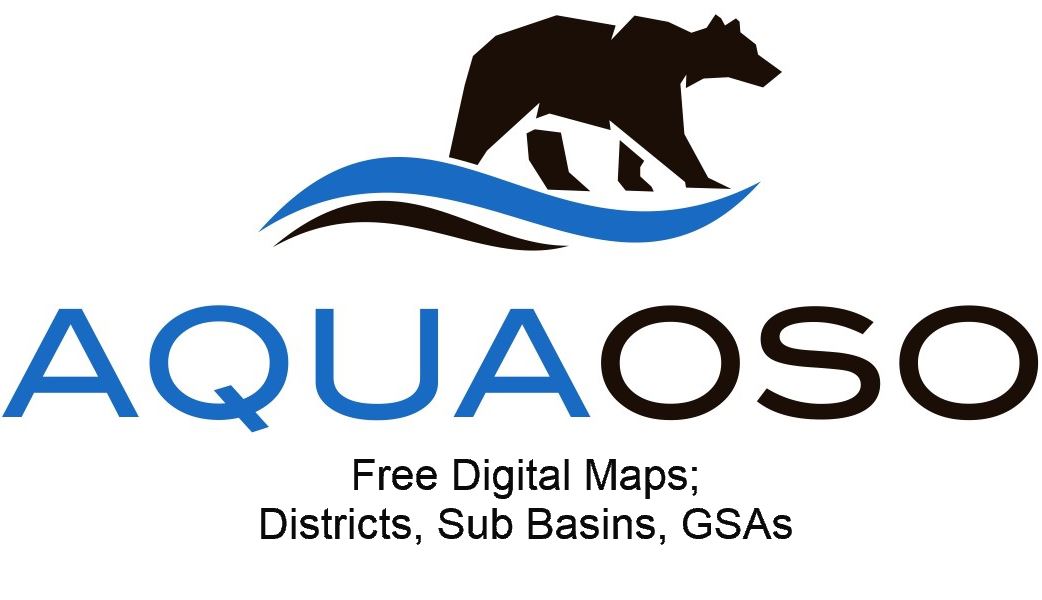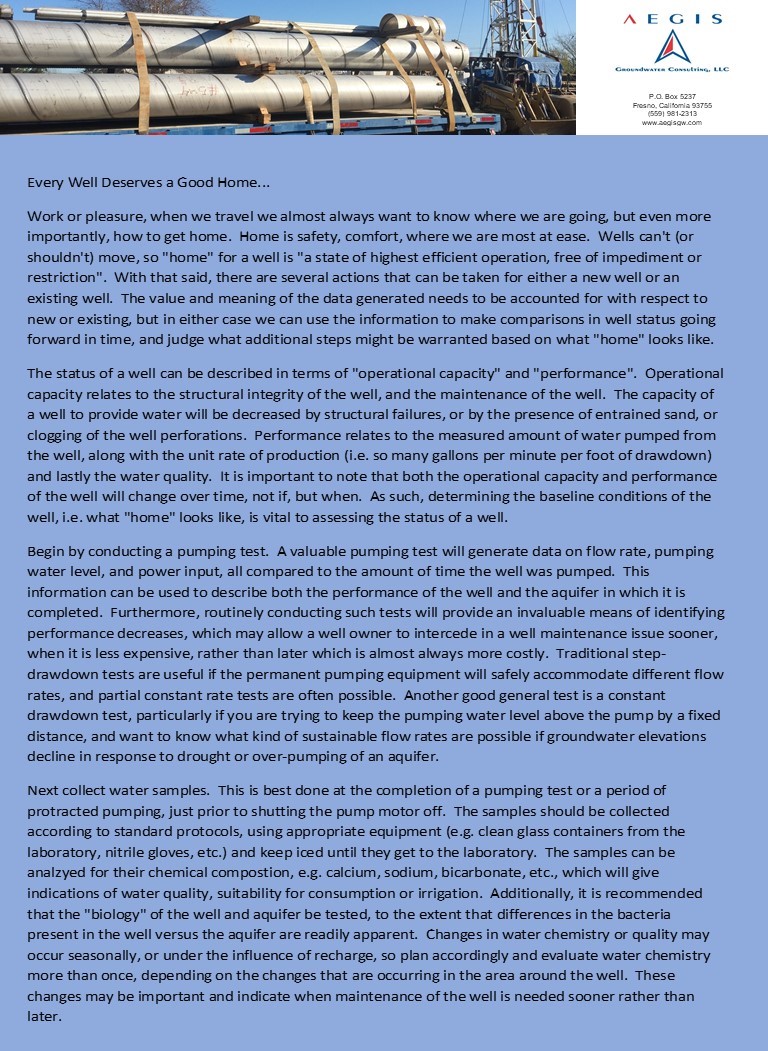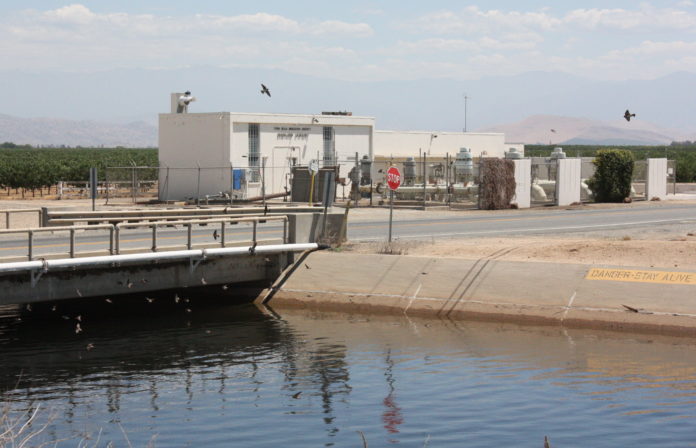 The Friant Water Authority met at the World Ag Expo facility in Tulare on Thursday, April 25, 2019 at the World Ag Expo in Tulare. The access road was blocked off with police tape. There were cops and what looked like coroners by a canal. Could have been a body or there might have been a blunt nosed giant garden snake chocking on a smelt. One ponders. I also noticed several South Valley Water Association folks have taken up the offer to attend this meeting.
The Friant Water Authority met at the World Ag Expo facility in Tulare on Thursday, April 25, 2019 at the World Ag Expo in Tulare. The access road was blocked off with police tape. There were cops and what looked like coroners by a canal. Could have been a body or there might have been a blunt nosed giant garden snake chocking on a smelt. One ponders. I also noticed several South Valley Water Association folks have taken up the offer to attend this meeting.
Chairman Chris Tantau called the meeting a little after 9:00am. The first thing was having Director Cliff Loeffler give a prayer. He also said it is a very busy time of year for farmers and he thanked folks for showing up. The agenda was approved and under public comments Tantau thanked the FWA staff for the annual dinner meeting. Elliot Bezdek was introduced. He’s attorney John Bezdek’s son and visiting the area while his father deals with the US Bureau of Reclamation. The board also approved the minutes.
Friant CFO Don Willard presented the bills and the board approved paying them and purchasing some motors and gear boxes from Allied Electric for a system upgrade.
COO Doug DeFlitch and Bill Swanson of Stantec Engineering spoke to the Friant Kern Canal Subsidence Correction Project. About 88 miles downstream from Friant Dam begins the middle reach of the canal. This is also the problem area from subsidence interfering with the canal’s capacity. Both FWA and the Bureau have received a draft feasibility report for review. There is a potential of the dreaded but kind of cute Kit Fox having a possible burrow somewhere in the area. That’s like not only finding out she’s pregnant but her family is also in the Mafia. Segments Two and Three are the worst hit by subsidence with the lowest point at Deer Creek. There are two surviving options from the original five. Alternative One and Five. Swanson said there are many cons and few pros to Alternative One and many pros and few cons for Alternative Five. Alternative One would take the canal out of service and widen it. Alternative Five would build a parallel canal. Both would take into consideration future subsidence issues.
Phasing is a consideration. I believe in this context phasing refers to the timing and order of work schedules. Swanson said there are six recommendations. He went into more detail but here they are: One – Select Alternative Five – a parallel canal. Two – Design the parallel canal for maximum design capacity at flood freeboard. Three – Design and permit the entire Middle Reach project. Four – Prepare construction documents; i.e. 100 percent bid ready documents. Five – Once funding availability is known prepare a request for bids for a “Schedule” of the work portion that matches the funding. And Six – Develop Right of Way acquisition plans that include sufficient land to accommodate raising the canal embankments to respond to future subsidence needs.
Right of Way is a big deal. There are potentially hundreds of parcels impacted. Swanson said he’s working attorney Don Davis on this matter so appropriate evaluations of cost can be ascertained. Fresno Irrigation District Director George Porter said when High Speed Rail started they didn’t have any idea of how to get the ROW together. Davis said he’s optimistic about not having to invoke eminent domain. He said this will take a team of appraisers and there is a great deal of work to be done. Having come this far money was the next big issues. Fresno ID and other Friant contractors are nervous about the cost of the repair bill. Porter asked if there is any money available besides assessing Friant districts and Executive Director Jason Phillips said there is some but not a lot. Certainly not enough to build the entire project but I think there is enough to get the plans together. The possibility of state and federal financing is out there. Davis said having the plans in place will facilitate the ability to get funding. Tom Barcellos asked if there has been any talk about charging wheeling rates for moving Kings and Kaweah River water. Sounded like a good idea to me but Phillips said that hasn’t been officially talked about but all good things can be considered. The board approved the recommendations with the exception of FID voting no.
DeFlitch next spoke on the cost sharing of fixing the Canal. Phillips said the Friant Executive Committee recommends  having an ad hoc committee of downstream districts; Arvin Edison WSD and Delano-Earlimart ID two of the most negatively impacted districts due to canal capacity limits and the other members of the ad hoc committee would be the districts most concerned about the costs (all upstream); Fresno ID and Orange Cove ID. The districts would send a director and a general manager with Tantau assisting. The board found that reasonable and agreed unanimously. More than one million acres made up of 15,000 farms are all impacted. Phillips said if the committee members emerge alive that will be a good sign.
having an ad hoc committee of downstream districts; Arvin Edison WSD and Delano-Earlimart ID two of the most negatively impacted districts due to canal capacity limits and the other members of the ad hoc committee would be the districts most concerned about the costs (all upstream); Fresno ID and Orange Cove ID. The districts would send a director and a general manager with Tantau assisting. The board found that reasonable and agreed unanimously. More than one million acres made up of 15,000 farms are all impacted. Phillips said if the committee members emerge alive that will be a good sign.
Next the item was the OM&R (R stands for Replacement) Cost Recovery Methodology revision. Phillips talked about where Operations and Maintenance funds go; the federal Jones Pumping Plant in the Delta, the Delta Mendota Canal and the O&M of the FKC. This runs about $21 million per year. The cost share for each district is based on several factors. For example the Jones Plant bill is only paid by Class One contractors and Madera ID and Chowchilla WD don’t pay for FKC O&M since they’re using the Madera Chowchilla Canal and not the FKC. Lindmore ID General Manager Mike Hagman came up with a methodology of the member districts paying by the amount of water being sent down the canal. But there are dry times, wet times and which time period would be good for developing an average to base the costs upon. There are also new colors of water since the San Joaquin River Restoration lawsuit. Phillips assigned – over the Easter weekend – Director of Water Policy Jeff Payne to develop a memo on how to smooth all of these variables together to arrive at an equitable estimation of costs everyone can live with. Payne not only earned his pay but lived up to a synonym to his surname by cranking out a 20-page memo. Fortunately for all of us this is a public document available by request should you require greater detail. Take heart, it’s been distilled down to a four-page document. By the way; Phillips said Payne – who called in from South Carolina – was on vacation. What a trooper. Phillips also said today’s vote isn’t the final binding decision. This has to go out to the Bureau for comment before there’s another final vote. Jeven Mohar, Arvin GM said there are some problems with the data set he’d like to see adjusted. Fergus Morrissey, GM Orange Cove ID said he’s done some analysis on this proposal. He said the restoration settlement could be interpreted as causing a 100,000 a/f more water being delivered in wet years than before and yet Class I deliveries are receiving less water. He said shifting more O&M costs on Class I contractors is adding insult to injuries. Tantau said he’s been a mediator in the email battles leading up to this and he’s learned more than he wanted to about the subject. The restoration started 10-years ago but there is a two year delay in data. The issue wasn’t whether or not a new methodology is needed but which time period should be used. The motion was made by Harvey Bailey of Orange Cove for a 60-day review of the proposed 20-year time frame for staff recommendation with
binding decision. This has to go out to the Bureau for comment before there’s another final vote. Jeven Mohar, Arvin GM said there are some problems with the data set he’d like to see adjusted. Fergus Morrissey, GM Orange Cove ID said he’s done some analysis on this proposal. He said the restoration settlement could be interpreted as causing a 100,000 a/f more water being delivered in wet years than before and yet Class I deliveries are receiving less water. He said shifting more O&M costs on Class I contractors is adding insult to injuries. Tantau said he’s been a mediator in the email battles leading up to this and he’s learned more than he wanted to about the subject. The restoration started 10-years ago but there is a two year delay in data. The issue wasn’t whether or not a new methodology is needed but which time period should be used. The motion was made by Harvey Bailey of Orange Cove for a 60-day review of the proposed 20-year time frame for staff recommendation with  the goal of having the policy in place by October of this year. Someone asked how the South Valley Water Agency feels about this. Phillips and Tantau both said SVWA has been involved in the workshops and there were some managers and directors present. The SVWA board is on a tour of the Delta today so most of them couldn’t be here. The motion passed with Arvin Edison opposing. Tantau thanked Payne for his extra work.
the goal of having the policy in place by October of this year. Someone asked how the South Valley Water Agency feels about this. Phillips and Tantau both said SVWA has been involved in the workshops and there were some managers and directors present. The SVWA board is on a tour of the Delta today so most of them couldn’t be here. The motion passed with Arvin Edison opposing. Tantau thanked Payne for his extra work.
Next DeFlitch presented the board with the water quality plan also known as the Water Quality Mitigation Ledger. It was one of those days – a 27-page memo was presented. General Manager Sean Geivet invited staff to develop a simpler document. There is a plan to set up the FKC with reverse pumping. This could introduce higher salt loads and the idea is to keep a ledger of who would be putting saltier water into the canal and who would be receiving this saltier water. Stantec Engineering has been working on the pump back project. DeFlitch said the recommended action would be to add to the Stantec scope of work the water quality portion. Phillips explained that  when Madera ID has some water in San Luis Reservoir – Delta water of a higher saline component – and wants to get its water out MID tells the Bureau to send Arvin Edison an acre foot out of San Luis and give MID more water from Millerton Lake. Today’s action is meant to forestall any lawsuits that could arise if there isn’t any mitigation offered to those getting saltier water. It also looks like funding will come from the Bureau and the Department of Water Resources with no out of pocket. The board approved changing the scope as staff recommended.
when Madera ID has some water in San Luis Reservoir – Delta water of a higher saline component – and wants to get its water out MID tells the Bureau to send Arvin Edison an acre foot out of San Luis and give MID more water from Millerton Lake. Today’s action is meant to forestall any lawsuits that could arise if there isn’t any mitigation offered to those getting saltier water. It also looks like funding will come from the Bureau and the Department of Water Resources with no out of pocket. The board approved changing the scope as staff recommended.
Rufino Gonsalves gave the Bureau report saying the spike in heat this week is causing runoff. Today and other days have been in the 90s but next week will drop back to more spring like 70s-80s. He said there is a possible storm coming through in early May but it didn’t seem to scare him any. Millerton Lake is receiving 126 percent flows to date. The entire San Joaquin River watershed flows are 228 percent above normal to date. He said there was an incorrect message that uncontrolled season is over but Gonsalves said it will most likely extend well past April 30th, maybe even into June. Bureau Area Manager Michael Jackson said acting Interior Secretary David Bernhardt is now the official Secretary of Interior. Jackson said Bernhardt send a rather long letter to employees that the mission is to carry out the agenda as presented by President Donald Trump. He also said the transfer of title meetings have been encouraging and Phillips agreed.
Austin Ewell gave the board and update on the San Joaquin Valley Blueprint saying the funding/finance/governance  committee is looking for further funding. He said Governor Gavin Newsom has been commenting on the Blueprint. Johnny Amaral also spoke saying finding ways to get funds from the 40-members. He spoke with the Central Valley Community Foundation in Fresno to set up a fund. Amaral said this should become a collective method instead of just Friant paying for everything. Ewell continued saying the outreach to disadvantaged communities and other matters are being considered. Outreach and engagements committee efforts have not gone unnoticed by Newsom and his ag advisor Bill Lyons. There was a meeting with them and they got to look over the Blueprint. The Public Policy Institute of California has a groundwater effort going and Ewell said that is tying in with the Blueprint. The next meeting will be May 15th. Arvin Director Edwin Camp asked how extensive the outreach to the disadvantaged communities has been. Ewell said Fresno State University’s Tommy Esqueda has been instrumental in this area as chair of the outreach committee. Amaral said the California League of Cities is meeting at the Ag Expo in August and he will be making a presentation. Amaral also praised Esqueda for his expertise and hard work. Phillips said getting all the communities to coordinate on water is more difficult than would be expected. He said the Blueprint is a way for all to speak in a unified voice. The idea of having the Blueprint becoming part of the Governor’s water plan is approaching reality. Phillips also said the actual plan has not yet been released to the public but soon will.
committee is looking for further funding. He said Governor Gavin Newsom has been commenting on the Blueprint. Johnny Amaral also spoke saying finding ways to get funds from the 40-members. He spoke with the Central Valley Community Foundation in Fresno to set up a fund. Amaral said this should become a collective method instead of just Friant paying for everything. Ewell continued saying the outreach to disadvantaged communities and other matters are being considered. Outreach and engagements committee efforts have not gone unnoticed by Newsom and his ag advisor Bill Lyons. There was a meeting with them and they got to look over the Blueprint. The Public Policy Institute of California has a groundwater effort going and Ewell said that is tying in with the Blueprint. The next meeting will be May 15th. Arvin Director Edwin Camp asked how extensive the outreach to the disadvantaged communities has been. Ewell said Fresno State University’s Tommy Esqueda has been instrumental in this area as chair of the outreach committee. Amaral said the California League of Cities is meeting at the Ag Expo in August and he will be making a presentation. Amaral also praised Esqueda for his expertise and hard work. Phillips said getting all the communities to coordinate on water is more difficult than would be expected. He said the Blueprint is a way for all to speak in a unified voice. The idea of having the Blueprint becoming part of the Governor’s water plan is approaching reality. Phillips also said the actual plan has not yet been released to the public but soon will.
DeFlitch gave a quick O&M report. Policy Expert Alex Biering gave the legislation report saying she spoke before a Senate Committee in support of the NASA Airborne Snow Observatory. She was able to present the electeds with a $600 million benefit. That is a considerably higher figure than it will cost to operative the ASO. We’ll see. She also said the SB 559 bill to get $400 million for a FKC fix is generating interest but since it is state money going to a federal facility there is some wandering in the wilderness going on between the ears of the electeds. She said the first NASA flights just happened last month. Tomorrow is the deadline for bills and that is causing a last minute clog with many bills going into the suspense file. Biering mentioned SB 1 that will roll back all regulations to the last day of the Obama administration. This bill poisons the well but the author has been supportive of the Friant bill. Phillips said although SB 1’s intent may not be to harm Friant’s water supply there must be some amending to prevent that from happening. Amaral added the congressional delegation has changed since the last election. He said the two new members in the Friant area, TJ Cox and Josh Harder are working well together with Friant. He’s trying to get senior members of the House majority to tour the Friant area. Another change going on is a change in Bureau policy that will allow transferring water to white areas.
Aaron Fukuda, GM Tulare ID gave the Temperance Flat report saying there are now four members of the Temperance  Flat Reservoir group; FWA, Exchange Contractors, the old Temp Flat JPA and City of Fresno. He said the Group has met with the California Water Commission, DWR and California Fish & Wildlife to clear up public benefits. Phillips said having Kole Upton as chair is a good move. I agree. Although I didn’t attend I know Upton can keep things going. Phillips said as the building of the MOU moves forward and a new JPA comes up he wanted districts to start thinking about if they want to join. We broke for lunch and the meeting then went into closed session.
Flat Reservoir group; FWA, Exchange Contractors, the old Temp Flat JPA and City of Fresno. He said the Group has met with the California Water Commission, DWR and California Fish & Wildlife to clear up public benefits. Phillips said having Kole Upton as chair is a good move. I agree. Although I didn’t attend I know Upton can keep things going. Phillips said as the building of the MOU moves forward and a new JPA comes up he wanted districts to start thinking about if they want to join. We broke for lunch and the meeting then went into closed session.
DISCLAIMER OF RESPONSIBILITY; Waterwrights strives to provide it’s clients with the most complete, up-to-date, and accurate information available. Nevertheless, Waterwrights does not serve as a guarantor of the accuracy or completeness of the information provided, and specifically disclaims any and all responsibility for information that is not accurate, up-to-date, or complete. Waterwrights’ clients therefore rely on the accuracy, completeness and timeliness of information from Waterwrights entirely at their own risk. The opinions expressed in this report are those of the author and do not represent any advertisers or third parties.
ALL RIGHTS RESERVED. Copyright 2019 by Don A. Wright 
FRIANT WATER AUTHORITY
854 N. Harvard Ave., Lindsay, CA 93247, Office 559/562-6305 Email:information@friantwater.org www.friantwater.org
The Friant Water Authority is a Joint Powers Agreement with 15 districts to operate and maintain the Friant Division of the Central Valley Water Project. Water from the San Joaquin River is diverted at Friant Dam at Millerton Lake to the Madera/Chowchilla Canal to the north and the Friant/Kern Canal to the south. More than one million acres of mostly family farms and numerous communities get their surface supplies from the Friant Division. Staff: CEO Jason Phillips, COO Doug DeFlitch, Superintendent Chris Hickernell and Attorney Don Davis.






























